It Got Cold Last Week But Still No Snow...
...unless you count these "snow-y" birds!
Earlier this winter I saw three Snowy Egrets dining in a corner of El Rio Preserve where water trickles into the preserve. This seemed to be a good spot for either small fish or other aquatic creatures. Snowy Egrets are uncommon but are found in our area near bodies of water in Pima County through the summer. There are fewer here during the winter but these three Snowy Egrets were comfortable at El Rio. Snowy Egrets have a black beak with a patch of yellow skin at the base.
Snowy Egrets are medium sized compared to other egrets and herons. They have black legs and yellow feet. Snowy Egrets are named after their snowy white plumage. In the late 19th century, Snowy Egrets were killed for their long, white breeding plumes that were popular in women's fashion of the day. Concerned citizens mobilized and in 1918, the Migratory Bird Treaty Act was signed, stopping the trade. Smithsonian Magazine tells the story
A more regular snowy sight during Tucson's winters is Snow Geese. There are usually several of these birds at scattered bodies of water around Pima County every winter. The pair of Snow Geese pictured below have spent the winter at one golf course in Tucson. The fairway grass is a great food source for them.
As adults, the feathers of Snow Geese are snowy white. Locally, most of the Snow Geese seen in Tucson are juveniles, meaning first year birds. Hatched last summer, these young birds are what is referred to as a dusky gray-brown on their head, neck and wings. These birds likely hatched on the tundra of the North Slope of Alaska. That's about 4000 miles from Tucson. Once these young birds learned to fly, they headed south to find food for the winter.
Snow Geese are vegetarians. They obviously are strong fliers, and they are also strong walkers and swimmers. The Snow Goose below spent a short while in a lake in a residential area of Tucson
Snow Geese have pink bills with a dark line along it. Sometimes this is referred to as a "grinning patch" or "black lips".
This goose, too, spent a good amount of time eating grasses. Snow Geese weigh from 4-8 pounds and are just over two feet long, from bill to tail. They are smaller than domestic geese that have been bred to be very large.
As I watched this Snow Goose, it would eat for a while, then drop into the water and swim around to find another spot to emerge and eat from. The color in the water is from the reflection of the clay roofs of the houses near the water.
In Tucson this winter, Snow Geese have been seen either singly or in small numbers at many area bodies of water including (within the past month) Lakeside Park, Fort Lowell Park, Sweetwater Wetlands, the Sewailo Golf Course, and Columbus Park. Up to 200 may be seen at Whitewater Draw near Willcox every winter. Bosque del Apache, in New Mexico, will have thousands of wintering Snow Geese every year.


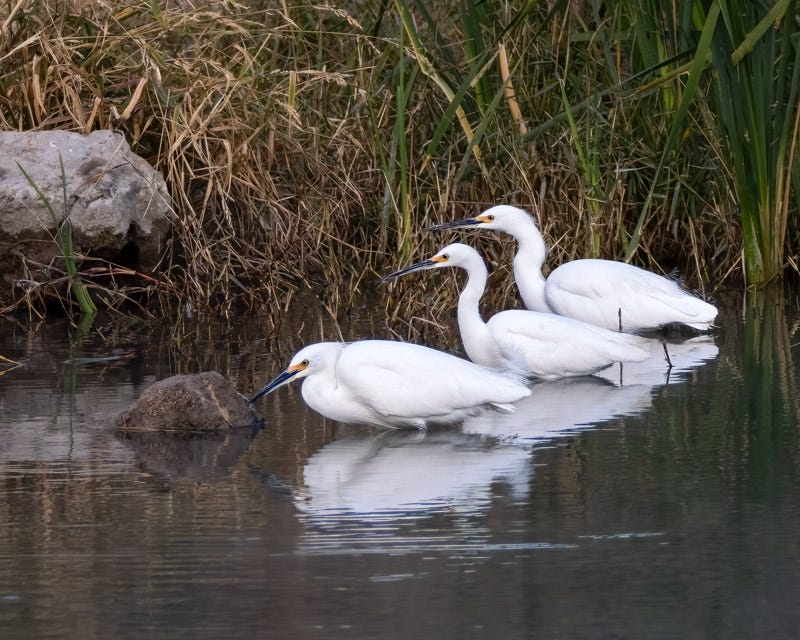
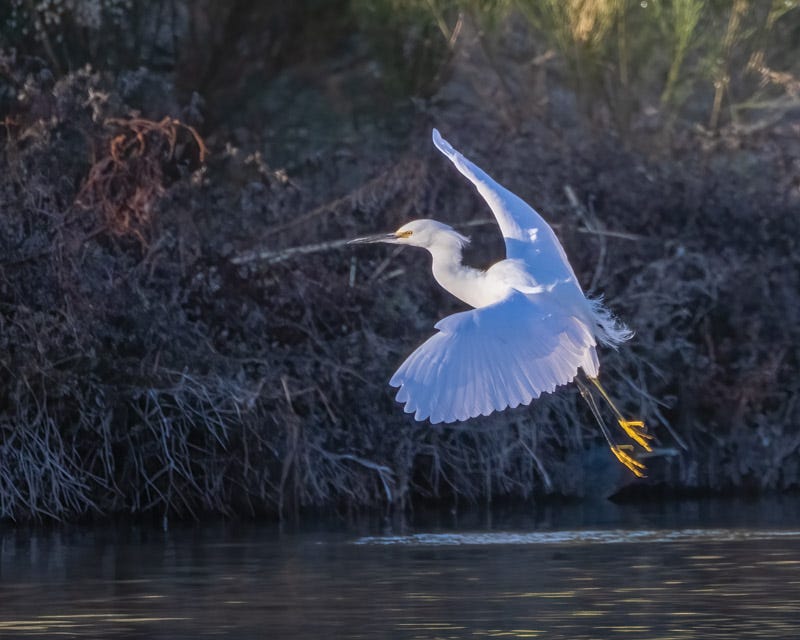
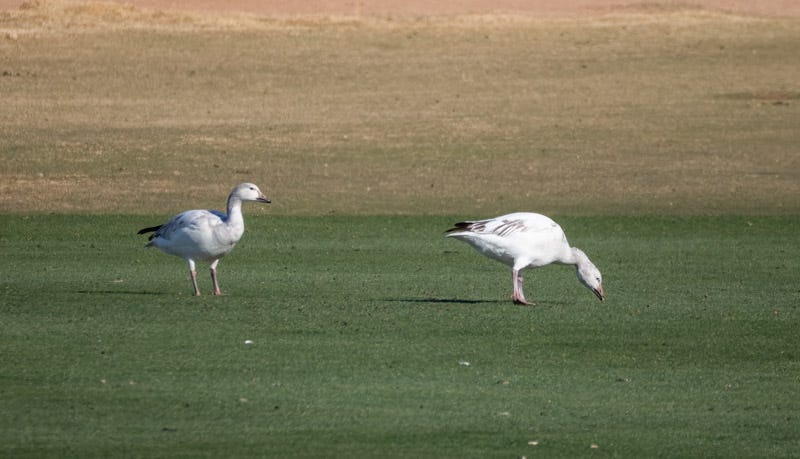


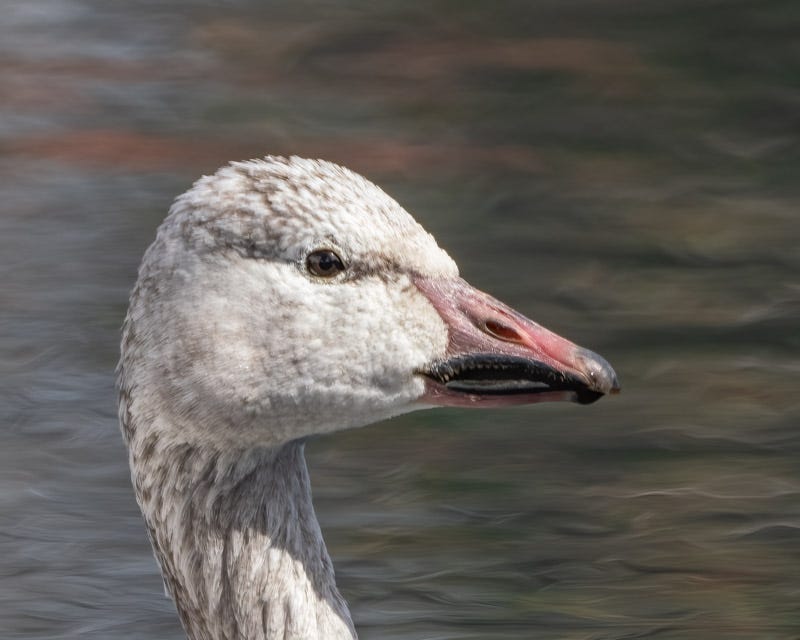
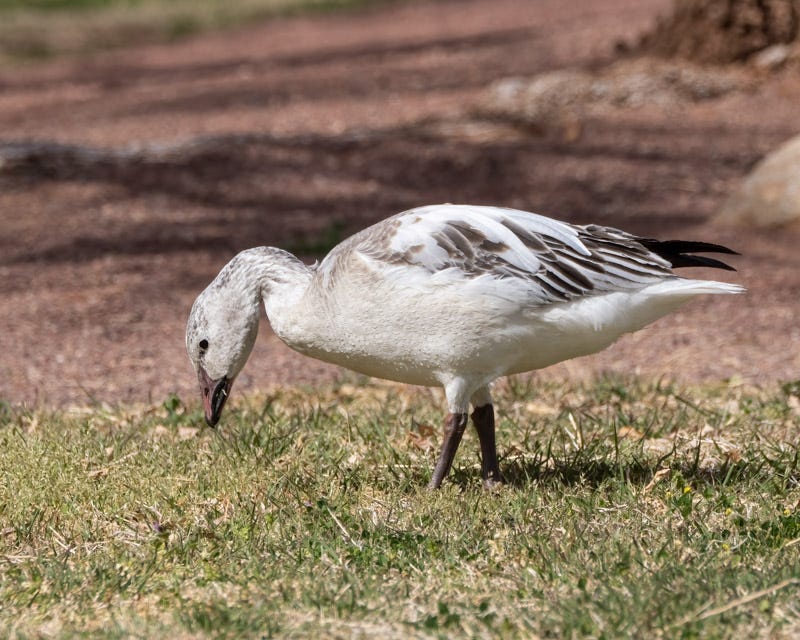
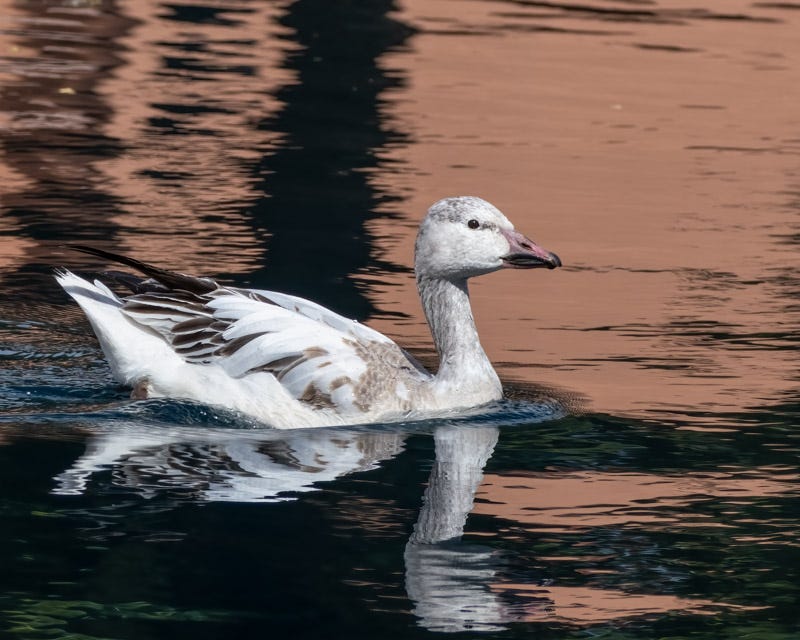
Thanks for sharing your wonderful photos of the egrets and geese.
Love this series and the pictures of the snowy egrets and the close up of the snow goose.